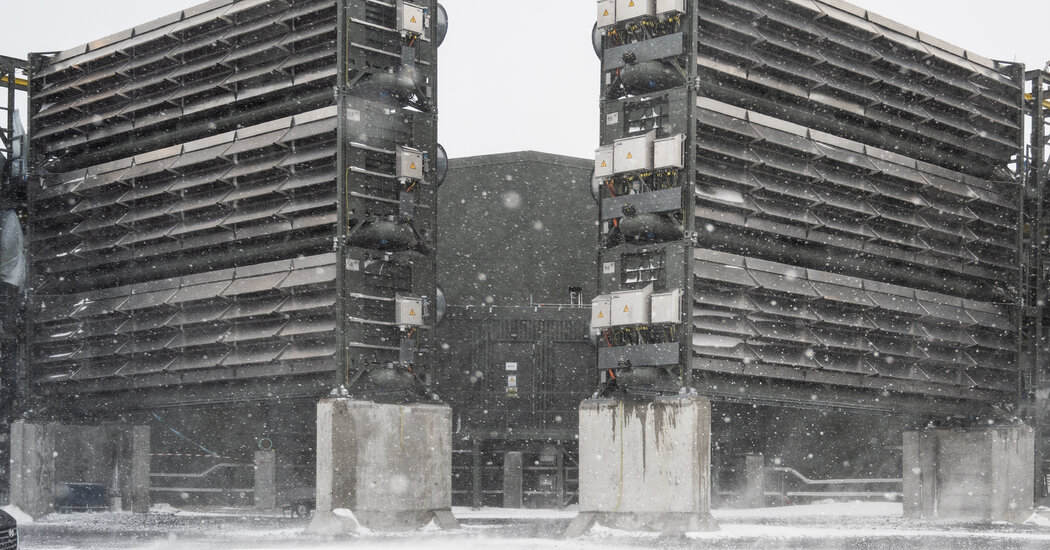On a windswept Icelandic plateau, an international team of engineers and executives is powering up an innovative machine designed to alter the very composition of Earth’s atmosphere.
If all goes as planned, the enormous vacuum will soon be sucking up vast quantities of air, stripping out carbon dioxide and then locking away those greenhouse gases deep underground in ancient stone — greenhouse gases that would otherwise continue heating up the globe.
Just a few years ago, technologies like these, that attempt to re-engineer the natural environment, were on the scientific fringe. They were too expensive, too impractical, too sci-fi. But with the dangers from climate change worsening, and the world failing to meet its goals of slashing greenhouse gas emissions, they are quickly moving to the mainstream among both scientists and investors, despite questions about their effectiveness and safety.
First in a series on the risky ways humans are starting to manipulate nature to fight climate change. Once science fiction, today these ideas are becoming reality.
Researchers are studying ways to block some of the sun’s radiation. They are testing whether adding iron to the ocean could carry carbon dioxide to the sea floor. They are hatching plans to build giant parasols in space. And with massive facilities like the one in Iceland, they are seeking to reduce the concentration of carbon dioxide in the air.
